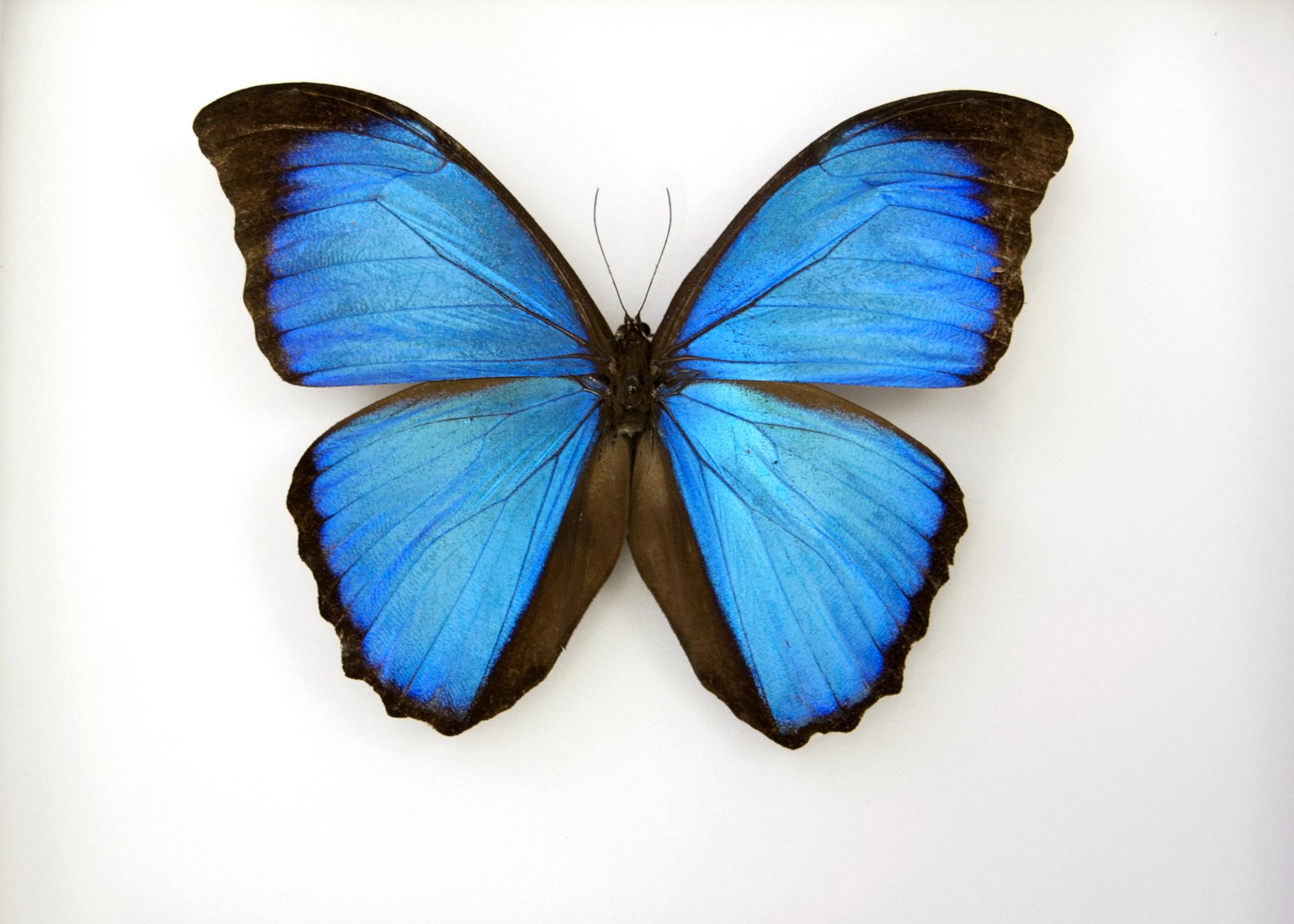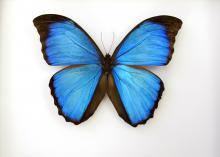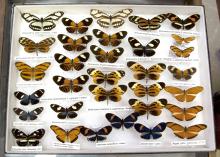Information Possibly Outdated
The information presented on this page was originally released on December 20, 2012. It may not be outdated, but please search our site for more current information. If you plan to quote or reference this information in a publication, please check with the Extension specialist or author before proceeding.
Private butterfly donation enhances MSU collection
MISSISSIPPI STATE -- A gift of butterflies has expanded the collection at the Mississippi Entomological Museum, the result of a life passionately dedicated to collecting the beautiful and fragile specimens.
Ruth Williams of Hattiesburg, widow of James J. Williams, donated Jim’s collection of tropical South American butterflies to Mississippi State University in November. There are about 1,300 labeled and identified specimens displayed in 46 cases.
JoVonn Hill, a research associate with the Mississippi Agricultural and Forestry Experiment Station, said the donation includes some high quality specimens, mostly from Ecuador and a few from Mexico.
“Once they have been systematically organized into our collection, this donation will expand our collection by adding new species we did not previously have,” Hill said. “It is difficult to obtain permits to collect in South America anymore.”
Ruth said she and her husband collected most of the butterflies on summer breaks from their jobs as teachers. Jim was a college and high school advanced-placement biology teacher in Chesterfield County, Va. Ruth taught both high school and college English.
“We went to Ecuador every summer from 1994 to 2000,” Ruth said. “Jim was working with a professor at the Catholic University in Quito, Ecuador, who would sponsor him to work in the country. For seven summers, we went to different places. We only went to one place twice.”
Many of these locations were remote and only accessible by perilous bus trips. One expedition required the Williamses to ride mules on a six-and-a-half-hour trek.
The couple stayed in Ecuador for two months at a time in the summers doing nothing but collecting. Living conditions were rustic, and Ruth would bring freeze-dried dinners and a portable cooktop for areas where other meals were not readily available.
“We didn’t think about teaching, didn’t think about the United States. We just thought about collecting. He collected and did the work of setting them himself and identifying them. I was his ‘my girl Friday.’ Occasionally I used his extra net, and I would play at collecting. I got a couple by mistake,” she joked.
Ruth said her husband was fanatical about butterflies from childhood. In college, he collected on his own in the United States and in Mexico. Although Jim had the lifelong passion for butterflies, Ruth came to love them, too, and enjoyed the summers spent chasing butterflies.
“In college and high school, I hated biology. He opened up a whole new world to me, and I totally enjoyed it,” she said.
Hill said Jim’s work was done with skill.
“Lepidoptera, which are the moth and butterfly species, aren’t the easiest specimens to prepare,” Hill said. “It takes a lot of practice and is a very tedious thing to do. We have found Jim’s specimens to be well prepared and preserved.”
Ruth is proud of her late husband’s collection.
“When he was collecting the butterflies, he would carefully fold them and put them in a special envelope. Once we returned to the United States, he would spend all his spare time during the school year labeling and pinning his specimens,” she said. “All his labels are hand-printed in tiny calligraphy, and he could set butterflies without touching a scale.”
Ruth said she and her husband chose to donate the collection to MSU after they got a favorable impression of faculty in the Department of Biochemistry, Molecular Biology, Entomology and Plant Pathology.
“They were really interested in encouraging students,” she said. “He was impressed by their open and friendly attitude. They made him feel good about his science and his work.”
Hill said the collection will be an asset to the Mississippi Entomological Museum housed at MSU.
“These tropical butterflies are all pinned, and the majority is displayed with the country of origin, province, dates, names and sometimes other information,” Hill said. “The value of this collection lies in the scientific information that comes with it, the value of the data. We can use this information to document many things about the species, such as its habitat, range and what time of year it is moving about.”




